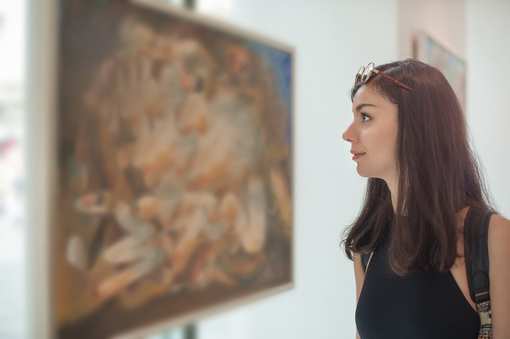History:
The Davis Museum and Cultural Center traces its origins to the October 23, 1889 dedication of the Farnsworth Art Building on the Wellesley College campus. It housed collections that dated to the founding of the College in 1875, when founder Henry Fowle Durant (1822-81) began a campaign to acquire original paintings, drawings, prints, and photographs, as well as plaster casts of classical sculpture, in service of a liberal arts education for women. Drawing and painting were integral to the first curriculum at the College; when Wellesley introduced the teaching of art history in 1885, it distinguished itself as one of the first American colleges to offer the subject.
Alice Van Vechten Brown, appointed in 1897 as museum director and head of the art department, modeled the new institution after the populist South Kensington Museum (now the Victoria & Albert Museum) in London. In keeping with Wellesley’s emphasis on learning and community service, Brown described the museum as “a place for classes and students, but also a place in which the public may linger and enjoy; a place to bring children, and in which teachers may study; a model to every college student of what a museum may do for any town in the land.” Brown is best known for her development of an influential art history curriculum, which focused on original art objects and was later called “The Wellesley Method.”
In 1926, Brown hired Alfred H. Barr, Jr. as an associate professor. At Wellesley, Barr developed the first modern art course in the United States. It included painting, sculpture, film, photography, architecture, and design— categories Barr later used to define the curatorial departments he devised as founding director of the Museum of Modern Art in New York.
John McAndrew, the first curator of architecture at MoMA, was appointed Wellesley College Museum Director in 1947. He was a robust collections builder, and under his leadership the collections came to include works by many pioneers of European modernism. In 1958, he moved the museum into expanded quarters in the Jewett Arts Center, designed by architect Paul Rudolph.
With the opening of Jewett, the visual arts at Wellesley entered a new era. Studios, classrooms, and offices provided students and faculty with new teaching and work areas. A dedicated gallery space offered a place for the study of Wellesley’s growing permanent collections and an opportunity to see temporary exhibitions. Jewett provided an intimate environment that enhanced Wellesley’s teaching resources as well as made the collections available to the entire College community.
The Museum’s collections expanded significantly through the next decade, particularly with the donation of a number of important modern works in honor of John McAndrew. During the directorship of Ann Gabhart (1972-1986), the Museum codified its professional policies, launched new educational programs, and further developed its collections. By 1982, the Museum’s holdings had doubled in size and the institution, previously administered by the Art Department, became an independent entity within the College.
The early 1980s also found the gallery in Jewett devoted exclusively to the display of special exhibitions. The need for dedicated, professionally maintained space in which to safeguard and exhibit the Museum’s permanent collections, along with a concomitant desire to maintain Wellesley’s leadership in arts education, prompted a call for enhanced facilities. In 1984, the Board of Trustees undertook a feasibility study to explore how best to meet the College’s needs for the teaching and presentation of art. The study’s findings recommended the construction of a new campus museum, and launched a capital campaign to support the project.
In 1988, Trustee and alumna Kathryn Wasserman Davis (Class of 1928) and her husband Shelby Cullom Davis gave the cornerstone gift to the campaign specifically to benefit the construction of a new museum. Their generosity made possible the conception and realization of a museum with ample facilities for exhibitions and programs, and increased opportunities to build connections to the broader educational mission of the College. Under the directorship of Susan Taylor, the new facility was conceived as both a museum and a cultural center. “We view this place not only as a museum, but as a true cultural destination,” said Susan Taylor; as “…a literal and figurative crossroads where students and faculty as well as artists, scholars, and the public can meet to exchange ideas and share in the mingling of disciplines… an environment in which art can educate, inspire, delight, provoke, and, perhaps, compel us to think in new ways while ever being aware of antecedents and traditions.”
In 1993, the Davis Museum and Cultural Center opened its doors in a new building designed by Pritzker Architecture Prize winner, Rafael Moneo. This facility, Moneo’s first North American commission, immediately distinguished the Davis among its academic museum peers, and among the art museums and cultural institutions of the Greater Boston area. The building also rearticulated and revitalized the longstanding commitment to the central role of the visual arts in undergraduate liberal arts education at Wellesley College.
Appointed Director in the fall of 2001, David Mickenberg refocused the Museum’s efforts toward building and researching the collections and increasing opportunities for collaboration with students and faculty across all academic disciplines. During his tenure, the Museum made several important acquisitions, introduced an adjunct curatorial program with College faculty members, and created several new internship opportunities for students.






